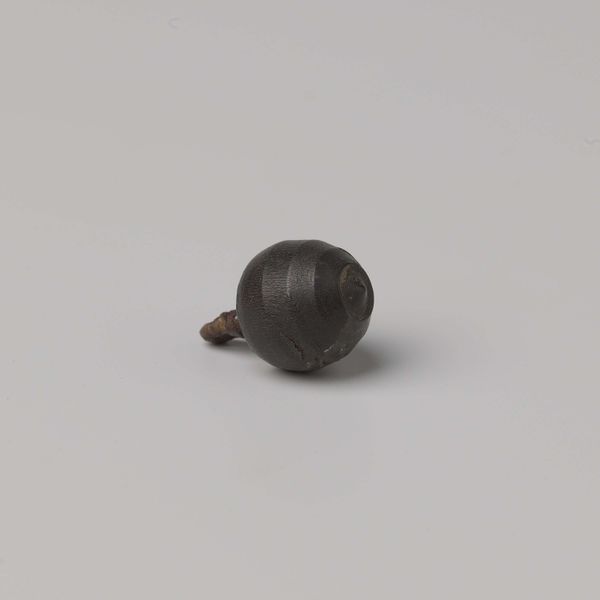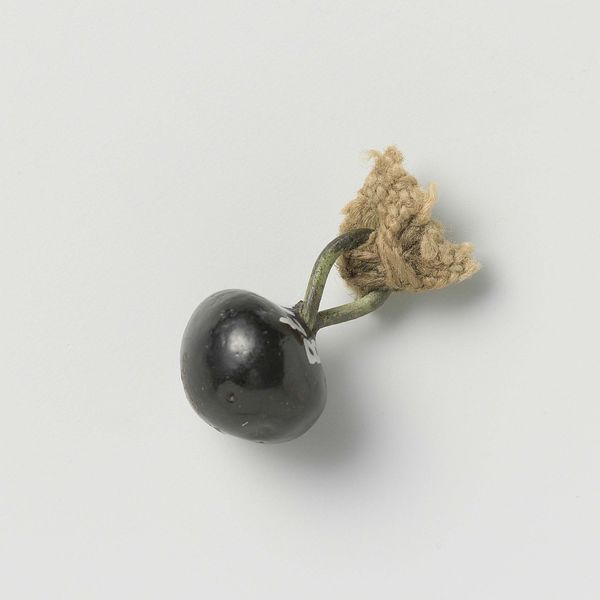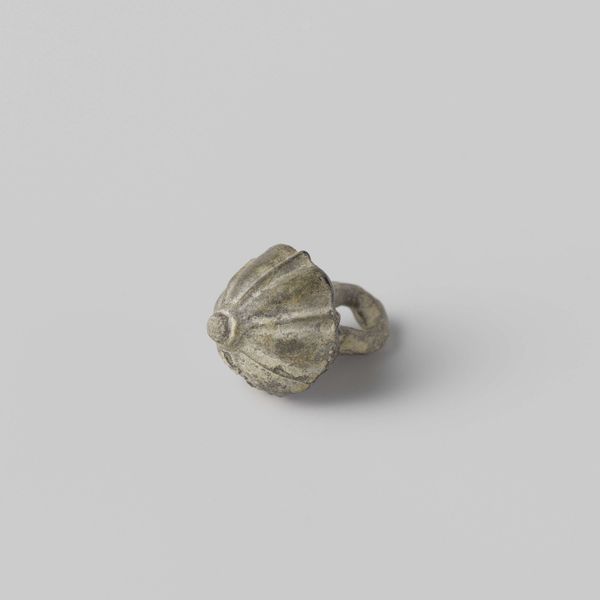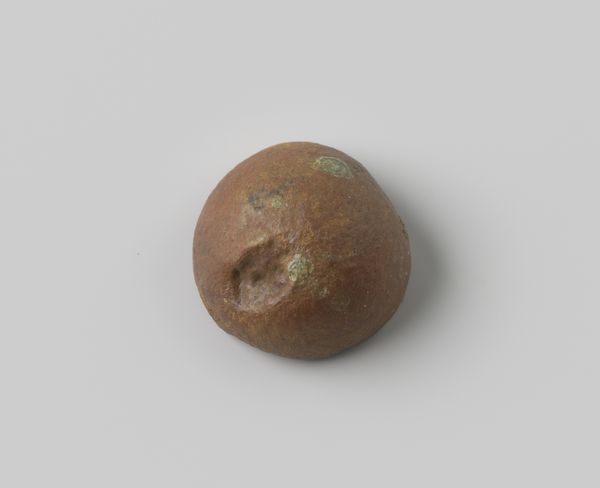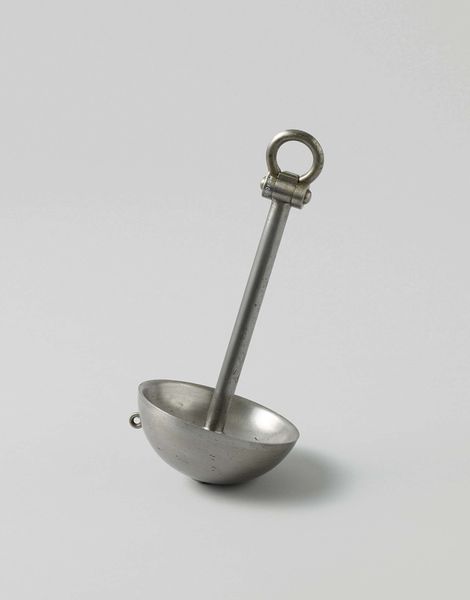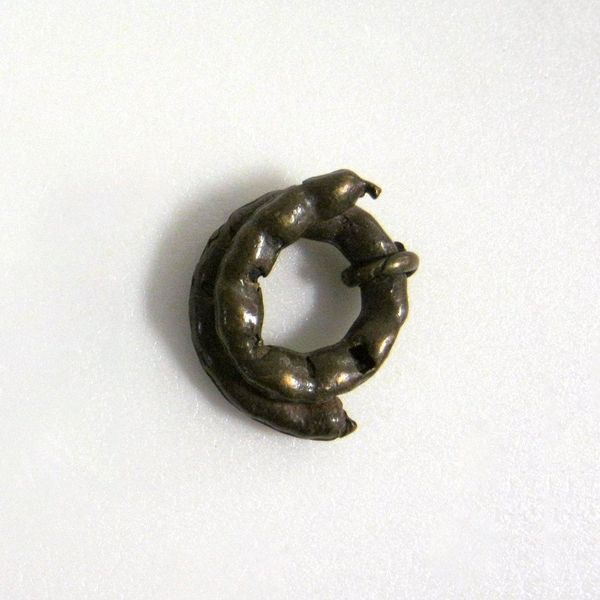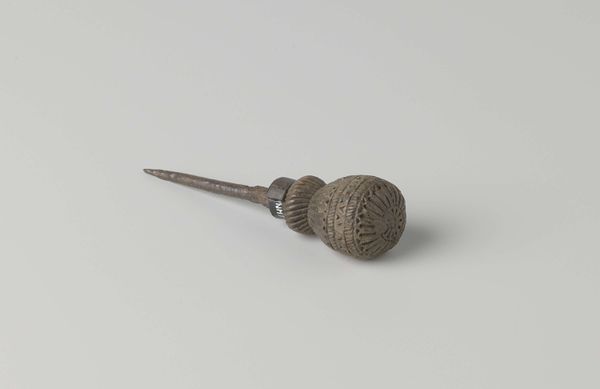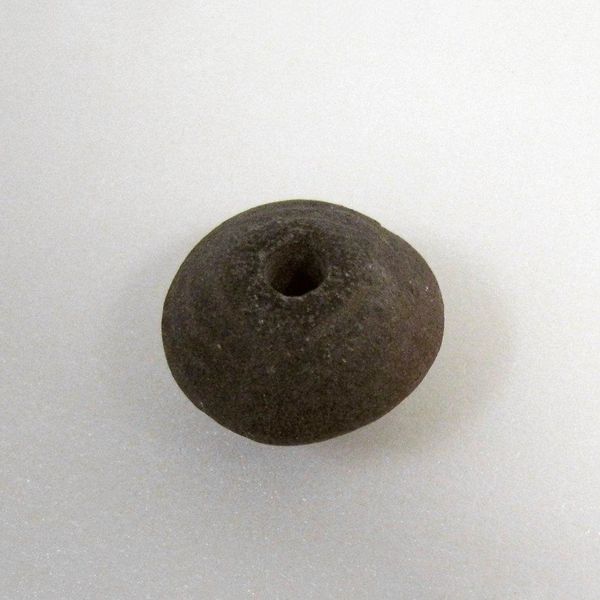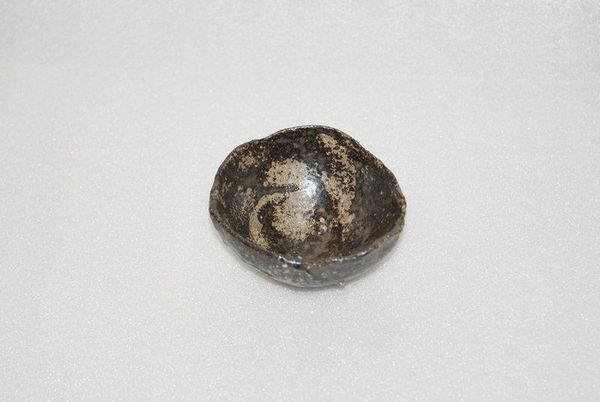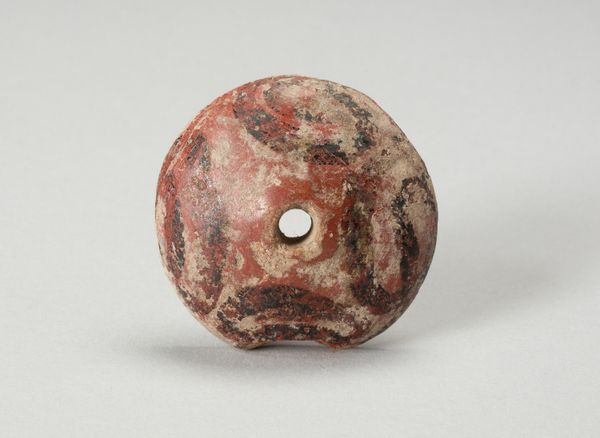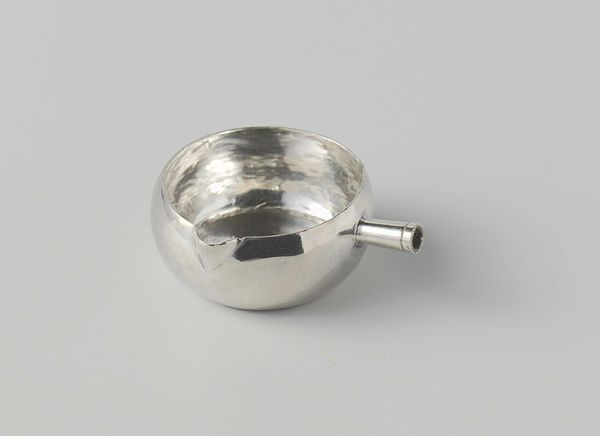
ornament, glass, sculpture
#
ornament
#
mannerism
#
glass
#
sculpture
Dimensions: height 0.9 cm, diameter 1.8 cm
Copyright: Rijks Museum: Open Domain
Curator: Up next, we have an intriguing small sculpture from around 1590-1596: an anonymous "Knoop van zwart glas of git," a "knob of black glass or jet" currently residing here at the Rijksmuseum. Editor: My first thought is how tactile it looks. Almost like a melancholic plum. There's something so somber yet precious about its simple form. Curator: I'm interested in thinking about this jet ornament within its historical context. In the late 16th century, the Protestant Reformation had created shifting ideas around luxury and ornamentation. Editor: Precisely. This makes me consider the materials used here. Glass, although precious, has ties to craftsmanship. And the dark shade evokes a link to mourning jewelry and sober, yet beautiful designs, fitting in a world in which simpler adornments were considered. The focus shifts from extravagance to skillfully crafted, enduring pieces. Curator: Black was such a politically and religiously loaded color. It could represent piety, or hint at hidden dissent and even the wealthy bourgeois looking to mimic nobility. Who would have worn such an item? What messages was it intended to convey in an era defined by increasing religious polarization? Editor: Also, glassworking techniques would have influenced who was producing this piece, maybe artisans in specific workshops known for dark glass. Understanding this labor connects us to their craft in a specific historical framework. What did their social standing entail? And how does the piece reflect these aspects? Curator: Examining the circulation and wearing of black glass tells us more about intersectional narratives in those years of change. Thinking about class, faith, gender, and their convergence is really an act of unveiling. Editor: Right, it makes one question whether a piece like this, beyond aesthetic considerations, served as a form of silent social commentary by means of its material simplicity. Curator: Definitely. This glass knob transcends a mere decoration, to act as a reflection on the anxieties, hopes, and negotiations present in its time. Editor: I agree. Examining the ornament through the lens of production allows one to consider not only the hands that shaped it, but the context that charged the materials with profound significance.
Comments
No comments
Be the first to comment and join the conversation on the ultimate creative platform.
